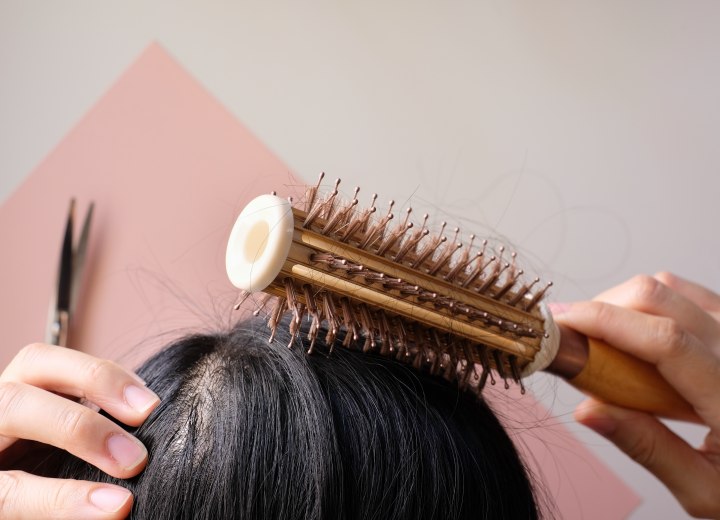Traction Alopecia

A: As we’ve discussed before, alopecia is simply a scientific term for “hair loss”. The cause of the hair loss is usually indicated by additional descriptive words that delineate specific types of Alopecia: e.g., Androgenic Alopecia (male pattern hair loss), alopecia areata (random-spot hair loss), or alopecia totalis (total-body hair loss).
Traction alopecia is a common cause of hair loss and has been traced to modern practices that include braiding and weaving, and the placement of hair extensions, and is seen both in children and adults.
What happens is that the tension placed on the scalp due to these styling techniques (and often the added tension caused by the weight of extension hair) irritates the scalp and the hair follicles which are being pulled upon. This causes the hair to loosen from its follicular roots, but is only a secondary issue. The big concern here is the inflammation caused by the irritation of the follicles from the chronic tension. The follicles can become atrophied and damaged to the point where they will no longer produce terminal (the longer, thicker and darker) hair. When caught early, this type of hair loss is reversible, but prolonged traction can and will cause permanent loss of hair in the affected areas.
The most common areas affected by traction alopecia are the forehead and temple regions, which are generally the areas that receive the most stress from the aforementioned styles.
As for styling hair that has suffered through traction alopecia – particularly for an African-American woman who has previously relaxed her hair – returning to as natural a style as possible is for the best. I hope that you have been consulting a dermatologist or at least your family doctor about the condition in order to get a reasonable assessment and prognosis.
What I can definitely encourage is that you look into simply looking for a simple flattering cut and use styling techniques that will be less stressful on your already stressed scalp. I would suggest sticking to gently wrapped wet sets that are allowed to dry naturally, or are dried under low heat hairdryers at the salon. This kind of styling can be gotten with assured consistency and safety from your local beauty schools (provided that they offer services to the public).
Obviously, it will take some time for the hair to grow back (if the loss was indeed reversible) and depending on how significant the loss is, you may want to consider keeping the length of your hair short for a while. If you do opt for a short, natural hair style, you can look into various “finger wave” styles which may be right up your alley. (For an example of finger wave styles, check out Queen Latifah as “Big Mama Morton” in the film Chicago.)
©Hairfinder.com
See also:
Hair loss
Alopecia
Is braiding bad for your hair?
Is it true that tying your hair in tight ponytails can lead to recession of the hairline?